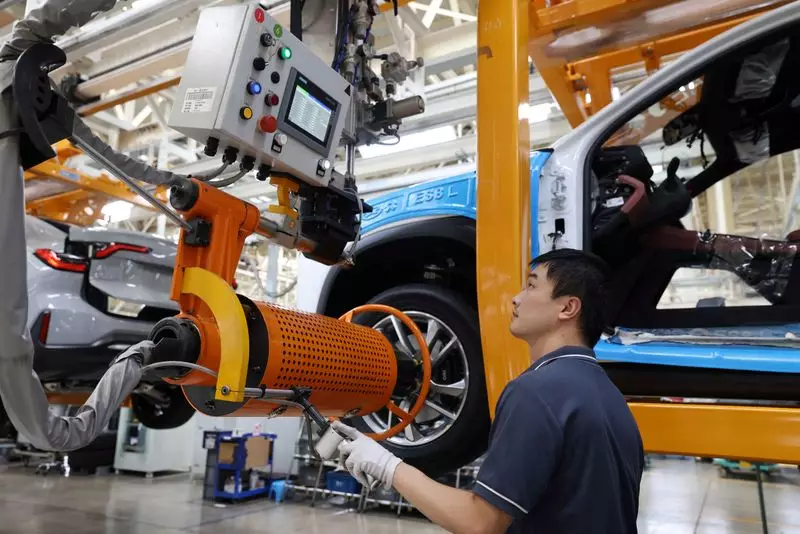China’s manufacturing sector experienced a slowdown in August, reaching a six-month low as indicated by the official factory survey. The purchasing managers’ index (PMI) fell to 49.1 from 49.4 in July, below the critical 50-mark that separates growth from contraction. This decline was unexpected, missing the median forecast of 49.5 in a Reuters poll. This downward trend in manufacturing activity suggests a challenging environment for the economy.
The disappointing figures have raised expectations that policymakers will need to implement new strategies to support the economy. The focus is likely to shift towards directing more stimulus to households rather than traditional infrastructure projects. Although the non-manufacturing PMI, which includes services and construction, showed a slight increase to 50.3 from 50.2, the overall economic outlook remains uncertain.
China’s consumer market has been grappling with challenges, with the previous reliance on real estate wealth posing significant hurdles. The slump in the property sector over the last three years has impacted consumer confidence, leading to a decline in spending. With retail sales outperforming expectations recently, there is hope for a revival in consumer activity, but detailed plans to reinvigorate the market are yet to be revealed.
Despite the easing of COVID-19 restrictions earlier this year, China’s economic recovery has been slower than anticipated. The government’s efforts to boost consumer spending are crucial in achieving the annual growth target of around 5%. However, analysts caution that additional policy measures may be necessary to stimulate growth effectively. The uncertainty in the property market and its impact on consumer behavior further complicates the economic outlook.
China’s manufacturing slowdown and the challenges in consumer spending highlight the need for targeted policy interventions. Policymakers must carefully consider the evolving economic landscape and adjust stimulus measures accordingly. A comprehensive strategy focusing on both short-term support for households and long-term structural reforms will be essential in navigating the current economic challenges.

